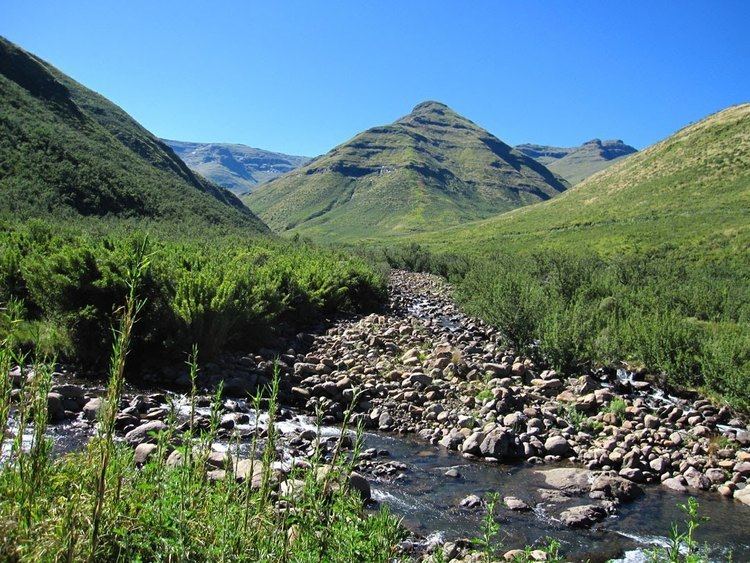 | ||
Similar | ||
Discover lesotho ts ehlanyane national park
Ts'ehlanyane National Park is Lesotho's largest National Park and is located in the Maloti Mountains in Butha-Buthe District, Lesotho, and is part of the larger Maloti-Drakensberg Transfrontier Conservation Area. This Lesotho northern park protects a high-altitude, 5,600-metre (18,400 ft) patch of rugged wilderness, including one of Lesotho’s only stands of indigenous forest with a number of rare undergrowth plants that are unique to this woodland habitat.
Contents
- Discover lesotho ts ehlanyane national park
- History
- Terrain
- Biota
- Bird species
- Wild flower and shrub varieties
- Indigenous Tree varieties in the Park
- Other Tree Varieties
- Fern Varieties
- Location
- Activities
- How to get there
- References
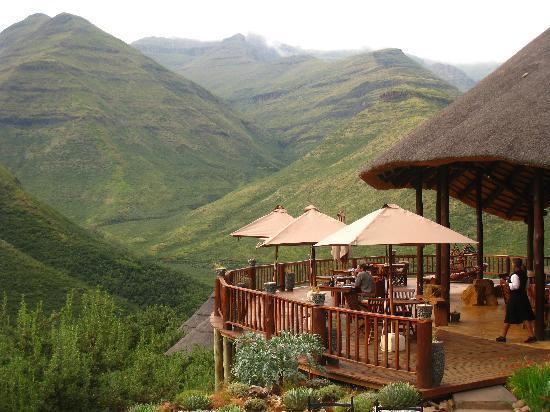
The name "Ts'ehlanyane" is the local common name for the berg bamboo (Thamnocalamus tesselatus), from which the river and park take their name. It is fitting that the park should bear the name of this Drakensberg endemic plant, as it may be the most important refuge for this plant in the entire Maloti-Drakensberg mountain range.
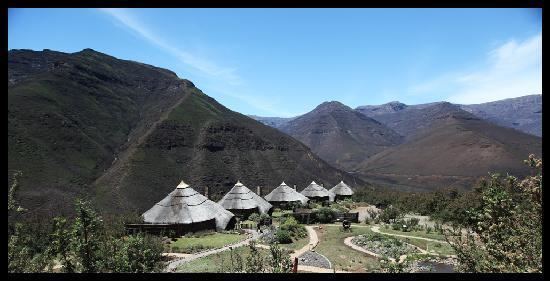
History
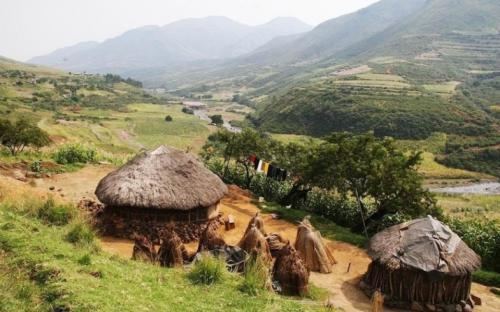
This proclaimed protected pristine area lies at the junction of the Ts'ehlanyane and the Holomo rivers. It owes its origin to the access road to the "Mamohale tunnel" (May 1991), which was the first adit drive for the Lesotho Highlands Water Project. This adit covers 22 km (14 mi) from the source at Katse Dam to the As River outfall near Clarens, Free State.
Terrain
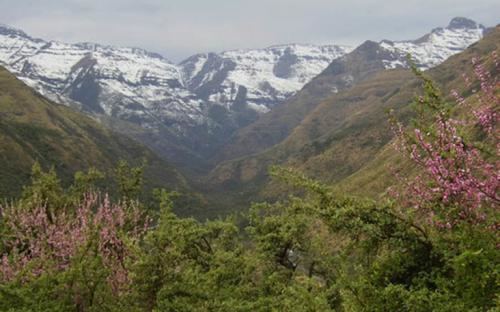
This Lesotho northern park protects a high-altitude, 2,600-metre (8,500 ft) patch of rugged wilderness, including one of Lesotho's few stands of indigenous forest with a number of rare undergrowth plants that are unique to this woodland habitat. Here indigenous "ouhout" (Leucosidea) trees of significant size are preserved.
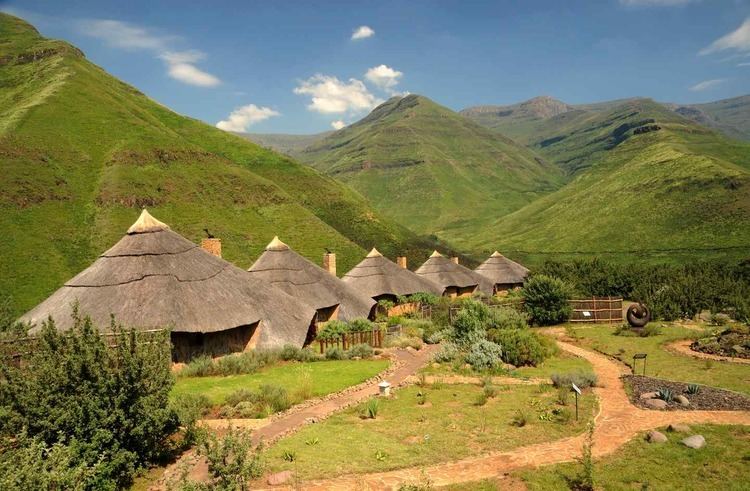
The park has an altitude ranging from 1,940 to 3,112 metres (6,365 to 10,210 ft) and is considered mostly sub-alpine. The diversity of habitat types is exceptionally wide and derived from the large altitudinal range that the park has.
Biota
Lesotho's national plant is the spiral aloe, among other varied and abundant alpine flora, including over 180 flowering species.
Bird species
Bird species found in the park include:
Wild flower and shrub varieties
Wild flowers and shrubs recorded at Ts'ehlanyane National Park on the Matsa-Mararo route via Lets'a-le-ts'o and the lower bridle path (4 × 4 track) that leads to Holomo Pass
(* = exotic)
Indigenous Tree varieties in the Park
Indigenous Trees as seen at the campsite, on the lower Lets'a-le-ts'o path en route to Matsa-Mararo falls and the lower bridle path (4 x 4 track) that leads to Holomo Pass
- *Rosa eglanteria (rosehip): thorny tree, pink flowers followed by orange–red fruit, in scrub forest near river and cheche forest
- Buddleja loricata (lelora; mountain sage; bergsaliehout) very similar to B. salviifolia but leaves are leathery, lanceolate, whilst B. salviifolia leaves are softer and oval/heart-shaped at base. B.loricata usually at higher altitudes than B. salviifolia, but their habitats do overlap(1,800–2,450 m (5,910–8,040 ft)). Inflorescences of B.loricata, smaller, only white, sweetly scented. B. loricata common in the vicinity of Lets'a-le-ts'o.
- Buddleja salviifolia (lelothoane; quilted sage; saliehout) Very similar to B. loricata but leaves and inflorescence differ: see B. loricata (supra). Flowers: fragrant, white to mauve in spring.
- Diospyros austro-africana subsp africana (liperekisi-tsa-makhoaba, senokonoko; firesticks star-apple; kritikom; vuurmaakbossie; jakkalsbessie) usually a shrub, sometimes small tree, grey appearance. Flowers: pink to red, highly fragrant during springtime. Fruit conspicuous: grey-green, red to black when ripe up to 20 mm (0.79 in) in diameter.
- Heteromorpha trifoliata (monkhoane; parsley tree; pietersieliebos) small tree with conspicuous bark peeling off in papery flakes, on steep slopes and cliffs where protection from veld fires esp. vicinity of the Matsa-mararo falls. Flowers and seeds resemble parsley.
- Leucosidea sericea (cheche; oldwood: ouhout), according to an entomological study made on the cheche of the Golden Gate area (EFS), these trees are the habitat of 117 species of beetles
- Myrsine africana (semapo; Cape myrtle; mirting) evergreen shrub with very small leaves, toothed in upper half, rarely a tree
- Rhamnus prinoides (mofifi; dogwood; blinkblaar) small tree, often in shade of cheche forest. Glossy-green leaves, small red–black berries
- Rhus divaricata (kolitsane; rusty-leaved current; roesblaartaaibos) shrub or small tree with trifoliate leaves, slightly leathery, dark olive green above, grey-green–rusty-brown hairs beneath, large numbers of small yellow to brown berries 3 mm (0.12 in) in diameter.
Other Tree Varieties
Other trees expected to occur in the area include:
- Bowkeria verticillata (isiduli; umbaba; southern shell-flower)
- Euclea crispa (mohlakola; blue guarri)
- Halleria lucida (lebetsa; tree fuschia; notsung)
- Passerina montana (lekhapu; mountain gonna)
- Rhus dentata (lebelebele; nana-berry)
- Rhus pyroides (kolitsane; common taaibos)
Fern Varieties
Ferns and fern allies
Underneath shade of cheche forest, an abundance of ferns occur: Polystichum spp. and Cheilanthes quadripinnata. Pteris cretica in damp places often near boulders. In exposed areas on rocky mountain slopes, typical poikylohydrous species evident like the resurrection fern and Cheilanthes eckloniana. Selaginella spp. expected on exposed rock surfaces.
Location
The park is located deep in the northern range of the Maloti Mountains at the foot of the Holomo Pass and only about 45 minutes on tarred road from the South African border post of Caledonspoort, 15 minutes drive from the popular Free State town of Clarens and about 4 hours from O. R. Tambo International Airport).
Activities
How to get there
A 32-kilometre (20 mi) tarred access road leaves the main A1 route 8 km (5.0 mi) south of Butha Buthe. The route passes through the village of Khabo and parallels the Hlotse river along the Holomo valley until it reaches the park entrance gate.
